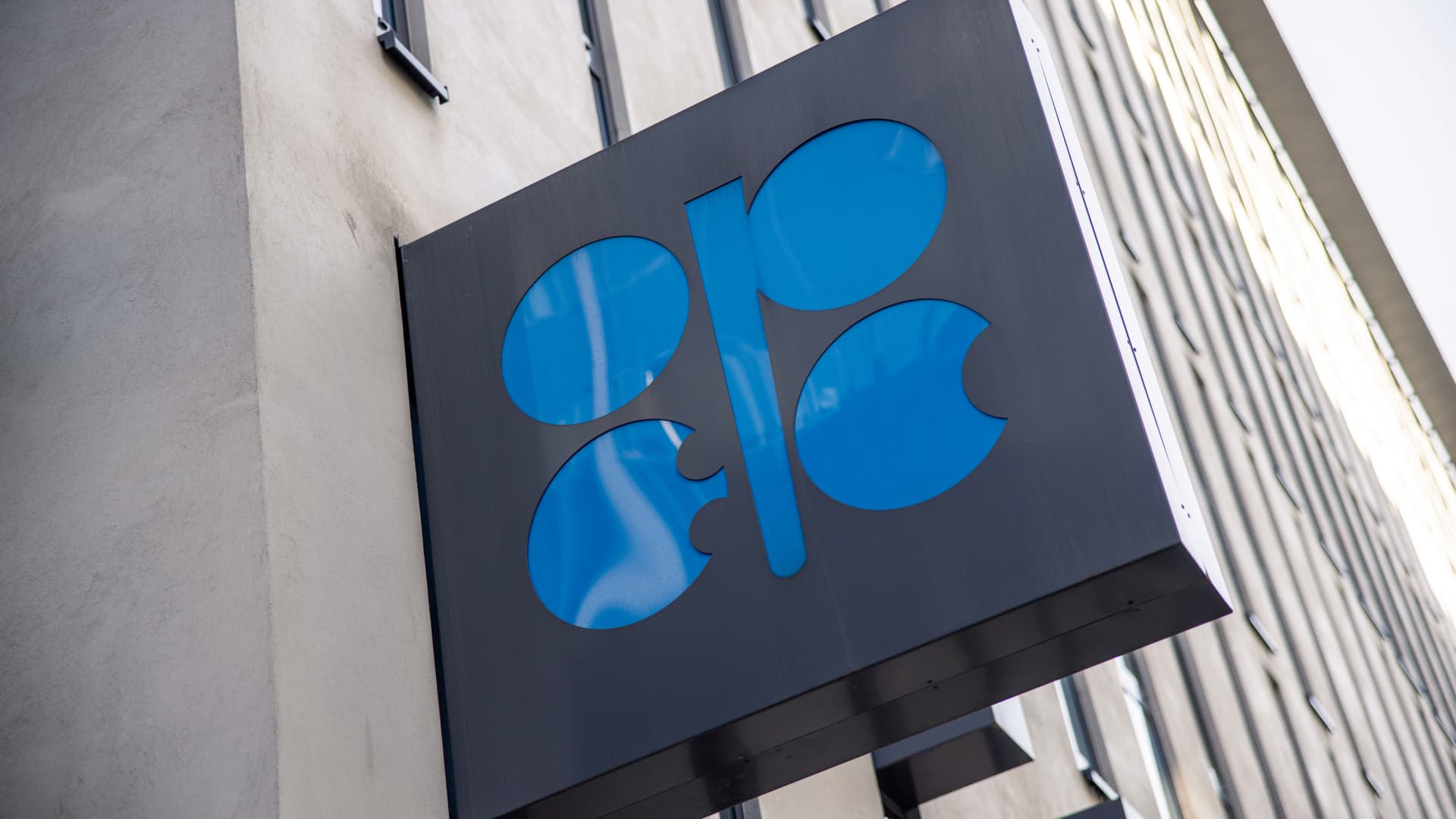OPEC and its oil-producing allies agreed Wednesday to their largest cut to daily crude output since the early days of the Covid-19 pandemic, a decision the Club took steps to prepare for earlier this week by paring our energy exposure. The Organization of Petroleum Exporting Countries and a group of partner producers led by Russia, together known as OPEC+, said they are cutting oil output targets by 2 million barrels per day. The move is seen as an attempt to reverse a steep slide in crude prices since early June, when prices topped $120 per barrel before tumbling more than 30%. Oil rose over 1% on the heels of the announcement, adding to strong gains at the start the week. Club holdings Halliburton (HAL), Pioneer Natural Resources (PXD), Devon Energy (DVN) and Coterra Energy (CTRA) also were in the green. The details Officially, OPEC+ is cutting production by 2 million barrels a day starting in November, from their August production target of 43.856 million barrels a day. However, analysts say, the actual number of barrels coming offline could ultimately be less than the headline figure given that many OPEC+ members have already been producing below their targets. Francisco Blanch, head of global commodities at Bank of America, addressed the potential discrepancy in a CNBC interview Wednesday . “I think one of the big questions is, are we really going to get a 2 million barrel a day real cut or is it going to be a 2 million barrel a day nominal cut that is, essentially, readjusted by the fact OPEC itself is producing 3 million barrels a day under their actual quotas?” Blanch explained. “I think if you reallocate those countries that are underproducing and they don’t actually cut, you’ll get, probably, more like [a] 1 million, 1.2 million barrels a day actual cut,” he added. The cartel’s decision to lower production is not a complete surprise to markets, but the expected magnitude ratcheted up in recent days. For example, last week, some analysts had been warning of a reduction between 500,000 and 1 million barrels per day, well below the headline cut OPEC+ delivered Wednesday. In the days leading up to the decision, energy markets started to price in OPEC+’s looming production adjustment. Brent crude, the global oil benchmark, rose nearly 7% over the first two days of the week. West Texas Intermediate, the U.S. oil benchmark, climbed more than 8% combined on Monday and Tuesday. After the OPEC+ announcement Wednesday, Brent was trading around $93 a barrel, while WTI was hovering above $87 a barrel. The Club’s positioning The Club’s energy exposure is all about protecting our portfolio from inflation, while collecting sizable dividend payouts along the way. In general terms, elevated oil prices are good for energy stocks and a headwind for the broader market. Owning stocks like Pioneer Natural Resources, Devon Energy, Coterra Energy and Halliburton has been a way to hedge against that dynamic. With oil supply already tight, OPEC+’s decision to slash production further is all about shoring up crude prices. Fears of a recession denting oil demand — combined with other factors like a strong U.S. dollar —contributed to crude prices tumbling during the summer months. We stuck to our investment discipline in the run-up to the OPEC+ meeting, as expectations for the cut pushed up oil prices. We trimmed 25 shares of Pioneer Natural Resources on Monday, redeploying cash from that sale into Estee Lauder (EL), and sold 100 shares of Devon Energy on Tuesday. We made those two sales of PXD and DVN into outsized strength — just as we trimmed our energy exposure when the sector was outperforming the overall market in late August and early September. After allowing our energy position to grow too large in early June, when oil was around $120 per barrel, we’ve been committed to our discipline in periods of outperformance. (Jim Cramer’s Charitable Trust is long PXD, DVN, CTRA and HAL. See here for a full list of the stocks.) As a subscriber to the CNBC Investing Club with Jim Cramer, you will receive a trade alert before Jim makes a trade. Jim waits 45 minutes after sending a trade alert before buying or selling a stock in his charitable trust’s portfolio. If Jim has talked about a stock on CNBC TV, he waits 72 hours after issuing the trade alert before executing the trade. THE ABOVE INVESTING CLUB INFORMATION IS SUBJECT TO OUR TERMS AND CONDITIONS AND PRIVACY POLICY , TOGETHER WITH OUR DISCLAIMER . NO FIDUCIARY OBLIGATION OR DUTY EXISTS, OR IS CREATED, BY VIRTUE OF YOUR RECEIPT OF ANY INFORMATION PROVIDED IN CONNECTION WITH THE INVESTING CLUB. NO SPECIFIC OUTCOME OR PROFIT IS GUARANTEED.
OPEC and its oil-producing allies agreed Wednesday to their largest cut to daily crude output since the early days of the Covid-19 pandemic, a decision the Club took steps to prepare for earlier this week by paring our energy exposure.
